
Accrual Accounting: 5 Things You Need to Know
 Have you heard of the accrual accounting method? It involves recording revenue and expenses when the respective transactions occur. If your business sells services, for instance, revenue-generating transactions may occur before customers actually pay you. With the accrual accounting method, you can record revenue and expenses before money is exchanged. Here are five things you need to know about the accrual accounting method.
Have you heard of the accrual accounting method? It involves recording revenue and expenses when the respective transactions occur. If your business sells services, for instance, revenue-generating transactions may occur before customers actually pay you. With the accrual accounting method, you can record revenue and expenses before money is exchanged. Here are five things you need to know about the accrual accounting method.
#1) Opposite of Cash Accounting
The accrual accounting method is the opposite of the cash accounting method. The U.S. Internal Revenue Service (IRS) supports both types of accounting methods. The cash accounting method involves recording revenue and expenses at the time when money is exchanged. The accrual accounting method, conversely, involves recording revenue and expenses when the transactions occur.
#2) Preferred Method By Medium and Large Businesses
While the IRS supports the cash accounting method and the accrual accounting method, medium and large businesses typically prefer the latter method. Individuals and small businesses typically prefer the cash accounting method. You can typically use either accounting method; just remember to stick with a single accounting method.
#3) Involve Double-Entry Bookkeeping
The accrual accounting method involves double-entry bookkeeping. Double-entry bookkeeping is an accounting technique in which you record transactions twice. If you sell a service for $10,000, you will record a debit of $10,000 when the transaction occurs. Once you receive payment from the customer, you would record a credit of $10,000 to the same accounts receivable and then another $10,000 for a revenue account.
#4) There’s a Hybrid Method
When most people think of accounting methods, they envision the accrual accounting method and the cash accounting method. But there’s another accounting method available: the hybrid method. As you may have guessed, the hybrid method combines elements of both the accrual accounting method and the cash accounting method.
#5) Offers Real-Time Insight Into Financial Health
You’ll have a better understanding of your business’s financial health if you use the accrual accounting method. The accrual accounting method offers real-time insight into your business’s financial health. With the cash accounting method, you won’t realize revenue and expenses until money is exchanged. The accrual accounting method takes a different approach by realizing them when the transactions occur.
There are different methods that you can use to track and record your business’s financial transactions, some of which include the cash accounting method, the accrual accounting method and the hybrid accounting method. The accrual account method is the opposite of the cash accounting. It’s preferred by medium and large businesses, involves double-entry bookkeeping and offers real-time insight into financial health.
What are your thoughts on the accrual accounting method? Let us know in the comments section below!

What Are Direct Costs and How Do They Affect Your Business?
 Not all business-related expenses are the same. They can be classified as indirect costs or direct costs, depending on how they are used. Direct costs are typically more important than indirect costs. What are direct costs, and how do they affect your business?
Not all business-related expenses are the same. They can be classified as indirect costs or direct costs, depending on how they are used. Direct costs are typically more important than indirect costs. What are direct costs, and how do they affect your business?
What Are Direct Costs?
Direct costs are business-related expenses that go towards a business’s money-making operations. They are known as “direct costs” because they are directly linked to products or services. Your business must spend money on goods or services so that it can sell its own products or services to customers.
Whether your business sells products or services, it will incur direct costs. Direct costs are expenses that are necessary for your business to sell its products or services. If your business manufactures products, for instance, it may incur direct costs like labor, machinery and utilities. Your business won’t be able to manufacture and sell its products without these direct costs.
Direct vs Indirect Costs
Indirect costs are business-related expenses as well, but they aren’t the same as direct costs. Direct costs are essential to your business’s money-making operations, whereas indirect costs are not. Rather, indirect costs are expenses that aren’t directly linked to products or services.
Another difference between direct costs and indirect costs is that only the former has a cost object. Cost objects are accounting items. They represent products, services, or in some cases, customers. When recording direct costs, you’ll need to associate them with a cost object. Each direct cost must be associated with a cost object. Indirect costs aren’t associated with a cost object. You can record indirect costs without worrying about cost objects.
Examples of indirect costs include:
- Insurance
- Marketing
- Office Supplies
The Impact of Direct Costs
Like all business-related expenses, direct costs can impact your business’s cash flow. Cash flow is a measurement of money coming into and out of your business. As your business generates revenue, it will have to spend some of that money on direct costs.
There’s no way to avoid direct costs. All businesses will incur at least some direct costs. The good news is that there are ways to lower your business’s direct costs. If you’re spending too much money on wholesale products, for example, you may want to choose a different vendor. If you’re overpaying for machinery, you may be able to save money by purchasing used machinery rather than new machinery.
Did this tutorial work for you? Let us know in the comments section below!

What Is a Personal Guarantee for a Business Loan?
 When applying for a business loan, you may have to make a personal guarantee. They aren’t required for personal loans. Business loans, though, often require a personal guarantee. Whether you’re trying to obtain a business loan from a bank or alternative lender, you may be required to make a personal guarantee.
When applying for a business loan, you may have to make a personal guarantee. They aren’t required for personal loans. Business loans, though, often require a personal guarantee. Whether you’re trying to obtain a business loan from a bank or alternative lender, you may be required to make a personal guarantee.
Personal Guarantees Explained
A personal guarantee is a binding pledge or commitment that guarantees a business loan with the borrower’s personal finances. Business loans, of course, are intended for businesses. If you own a business, you can obtain a business loan to finance it. You can then use these borrowed funds to expand into new territories, invest in marketing, develop new products or otherwise grow your business. But the lender may require you to make a personal guarantee.
By making a personal guarantee, you are placing your personal finances on the line. As long as you pay back the business loan according to the lender’s terms, nothing will happen to your personal finances. If you default on the business loan, however, the lender may claim ownership of your personal assets.
Is a Personal Guarantee Necessary?
Many lenders require a personal guarantee for their business loans. Lenders must evaluate a borrower’s risk of default. If a borrower has bad credit, the lender may require him or her to make a personal guarantee. It’s the equivalent of collateral. A personal guarantee will provide the lender with recourse if the borrower defaults on the business loan. The lender can claim ownership of the borrower’s personal assets to make up for the lost money.
Of course, there are instances in which you may not be required to make a personal guarantee. If your business has good credit, for instance, lenders may not require a personal guarantee. Good business credit is a sign of trustworthiness. It indicates that lenders can trust your business to repay its debts, including its loans.
Even if it’s not required, a personal guarantee offers advantages. It can help you achieve a lower interest rate. Lenders may offer lower interest rates on business loans if you make a personal guarantee. A personal guarantee can also speed up the approval process. Lenders may approve your application more quickly, resulting in fast cash for your business.
In Conclusion
A personal guarantee is a commitment to repay a business loan using your personal finances. Many lenders require it, especially for businesses with bad credit.
Have anything else that you’d like to add? Let us know in the comments section below!

What Are Non-Operating Assets?
 Business accounting requires an understanding of assets. All businesses have assets. Assets are economic resources or items of value that can be exchanged for cash. Not all assets are the same, however. There are different types of assets, including non-operating assets. What are non-operating assets exactly, and how do they differ from operating assets?
Business accounting requires an understanding of assets. All businesses have assets. Assets are economic resources or items of value that can be exchanged for cash. Not all assets are the same, however. There are different types of assets, including non-operating assets. What are non-operating assets exactly, and how do they differ from operating assets?
Non-Operating Assets Defined
Non-operating assets are economic resources or items of value that aren’t used in a business’s core operations. As a business owner, you may rely on certain assets to facilitate your business’s money-making operations. Different businesses use different assets to make money. Assets that aren’t used to make money on behalf of your business are non-operating assets. They are known as “non-operating assets” because they aren’t used in your business’s operations. Rather, your business owns the assets for other purposes, such as appreciation.
Non-Operating vs Operating Assets
Assets can be classified as non-operating or operating depending on how they are used. Non-operating assets aren’t used in your business’s operations, whereas operating assets are used in your business’s operations.
Some of the most common types of non-operating assets include real estate, cash, accounts receivables, excess and unused equipment and vacant buildings. These are all economic resources or items of value, and you can exchange all of them for cash. Nonetheless, your business won’t use these economic resources in its operations, so they are classified as non-operating assets rather than operating assets.
Why Non-Operating Assets Are Important
Non-operating assets are important because they affect your business’s valuation. If your business has a lot of non-operating assets, it will be valued higher. A high valuation, of course, will allow you to secure more financing without giving up a large portion of your business’s equity.
Equity financing involves a valuation. If you want to obtain financing from an investor, you’ll have to agree to sell a portion of your business’s equity to the investor. The amount of money that the investor pays for your business, as well as the portion of the equity, will determine your business’s valuation. Business valuations are affected by non-operating assets. The more non-operating assets your business has, the higher your business’s valuation will be.
Like all assets, non-operating assets are tax-deductible. You can deduct the cost of non-operating assets from your business’s taxes. If you spend $100,000 on non-operating assets in a given year, you can typically deduct $100,000 from your business’s taxes.
Have anything else that you’d like to add? Let us know in the comments section below!

The Basics of Payroll Accounting and How It Works
 Payroll accounting is something that nearly all business owners will have to perform. Unless you operate a sole proprietorship, you’ll probably have employees whom you must pay. Some businesses have hundreds of employees, whereas others have thousands of employees. Even if your business only has a few employees, though, you’ll have to pay them. What is payroll accounting, and how does it work exactly?
Payroll accounting is something that nearly all business owners will have to perform. Unless you operate a sole proprietorship, you’ll probably have employees whom you must pay. Some businesses have hundreds of employees, whereas others have thousands of employees. Even if your business only has a few employees, though, you’ll have to pay them. What is payroll accounting, and how does it work exactly?
What Is Payroll Accounting
Payroll accounting is the process of tracking and processing employee-related expenses. Employees don’t work for free. When you hire an employee, you’ll have to agree to compensate him or her.
Employee compensation can consist of hourly wages, annual salaries, sale commissions, bonuses and more. The term “payroll accounting” refers to paying employees their agreed-upon compensation and tracking these payments for recordkeeping purposes.
Payroll accounting also encompasses tax withholdings, including Social Security and Medicare taxes. As a business owner, you may be required to withhold taxes from your employees’ compensations. Payroll accounting includes tracking and processing ta withholdings such as this.
How Payroll Accounting Works
You can perform payroll accounting in different ways. There’s in-house payroll accounting, for instance, and there’s outsourced payroll accounting. If you perform it yourself — or if another employee who works for your business performs it — it’s considered in-house payroll accounting. Outsourced payroll accounting involves partnering with a third party. There are accountants, for instance, who offer payroll accounting services. You can partner with an accountant so that he or she handles your business’s payroll accounting.
QuickBooks Payroll
QuickBooks offers a payroll accounting solution. If you currently use QuickBooks Desktop, for example, you can sign up for Enhanced Payroll. Enhanced Payroll is an optional add-on service for QuickBooks Desktop. As the name suggests, it provides enhanced payroll accounting features that aren’t otherwise included in the standard version of QuickBooks Desktop.
With Enhanced Payroll, you can create W-2s for your business’s employees and 1099s for your business’s contractors. This optional add-on service also offers automatic tax calculations. You won’t have to manually calculate payroll-related taxes. Instead, QuickBooks will calculate it automatically if you have Enhanced Payroll.
Another feature of Enhanced Payroll is electronic tax filings. You can file tax forms online with Enhanced Payroll. You won’t have to manually print and file tax forms at the end of the year. Rather, you can take advantage of electronic tax filings with Enhanced Payroll.
Have anything else that you’d like to add? Let us know in the comments section below!
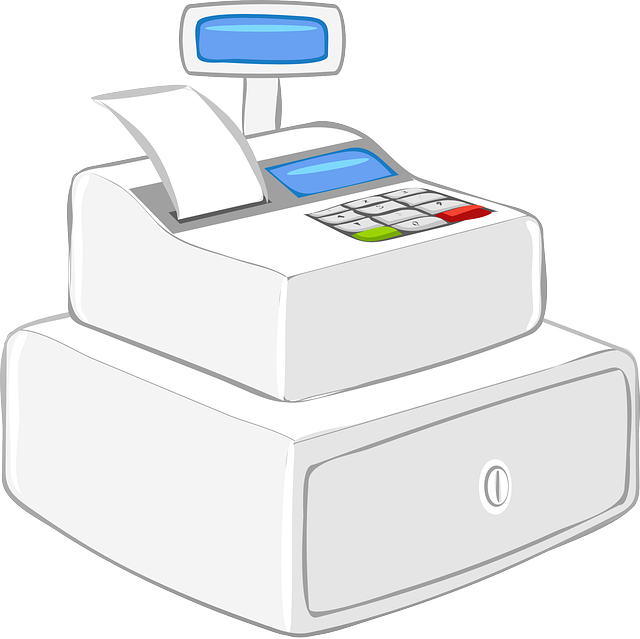
Revenue vs Cash Flow: What’s the Difference?
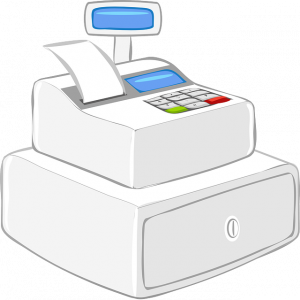 Revenue and cash flow are two of the most important financial metrics for your businesses. Regardless of what products or services your business, you should track its revenue and cash flow. All businesses have revenue and cash flow. Like with other financial metrics, though, revenue and cash flow will vary.
Revenue and cash flow are two of the most important financial metrics for your businesses. Regardless of what products or services your business, you should track its revenue and cash flow. All businesses have revenue and cash flow. Like with other financial metrics, though, revenue and cash flow will vary.
What Is Revenue?
Revenue is money that your business generates by selling its products or services. Customers, of course, will purchase your business’s products or services. Whether they pay with cash, credit cards, debit cards, checks, etc., they’ll provide your business with revenue. Your business will generate revenue from the sale of its products or services.
Keep in mind that revenue isn’t the same profits. Your business may generate revenue without turning a profit. If your business’s expenses are greater than its revenue, it won’t turn a profit. You’ll need to keep your business’s expenses lower than its revenue to turn a profit.
What Is Cash Flow?
Cash flow is a measurement of liquidity. It represents money flowing into and out of your business. Revenue is money flowing into your business. When your business generates revenue, its cash flow will typically increase.
In addition to revenue, cash flow takes into account expenses. Money flowing out of your business include expenses. When you pay for utilities, insurance, payroll or other business-related expenses, money will flow out of your business. Cash flow is a measurement of the money flowing into and out of your business.
Differences Between Revenue and Cash Flow
You can’t run a successful business without considering its revenue and cash flow. Revenue refers to money generated by your business from the sale of its products or services. Cash flow, on the other hand, is money that flows into and out of your business.
Revenue only takes into account product and service sales. Cash flow, in comparison, takes into account revenue and expenses. Cash flow is the relation between your business’s revenue — money flowing into your business — and your business’s expenses.
It’s important to note that cash flow can be positive or negative. Positive cash flow means there’s more money flowing into your business than out of your business. Negative cash flow means the opposite. With negative cash flow, more money will flow out of your business than into your business.
Have anything else that you’d like to add? Let us know in the comments section below!
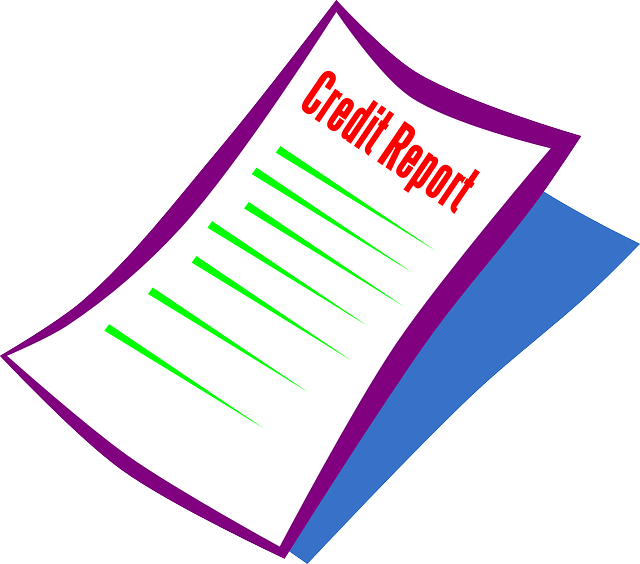
5 Common Myths About Business Credit You Shouldn’t Believe
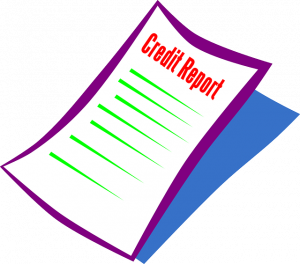 As a business owner, you should closely monitor your business’s credit score. Business credit scores can fluctuate. With a high business credit score, you’ll have an easier time securing loans and other forms of debt financing. A low business credit score, on the other hand, can pose financing challenges. And without financing, you may struggle to grow or even run your business. Nonetheless, there are several business credit myths that you shouldn’t believe.
As a business owner, you should closely monitor your business’s credit score. Business credit scores can fluctuate. With a high business credit score, you’ll have an easier time securing loans and other forms of debt financing. A low business credit score, on the other hand, can pose financing challenges. And without financing, you may struggle to grow or even run your business. Nonetheless, there are several business credit myths that you shouldn’t believe.
#1) Same as Personal Credit
Business credit is not the same as personal credit. Business credit refers to the credit worthiness of a business entity. Personal credit refers to the credit worthiness of an individual person. They are both measured in numerical scores. Business credit is simply associated with a business, whereas personal credit is associated with an individual person.
#2) Buying Things on Credit Will Improve Your Score
In a perfect world, all goods and services that your business purchases on credit will improve your business’s credit score. Unfortunately, this isn’t always the case. Only some vendors may report your purchases to a credit bureau. These reported purchases should improve your business’s credit score. Credit-based purchases that go unreported, though, won’t impact your business’s credit score.
#3) Only Late Payments Will Harm Your Score
Like with personal credit, failing to pay your business’s bills by their due date may harm your business’s credit score. With that said, late payments aren’t the only thing that can harm your business’s credit score. Hard inquiries can have a negative impact on business credit scores. If your business has an excessive number of hard inquiries in a short period, your business’s credit score may drop.
#4) Business Credit Isn’t Necessary
While some businesses may not need it, most businesses will, in fact, need a good credit score to succeed. As previously mentioned, it affects financing. Lenders will check your business’s credit score, and they’ll use this information to approve or reject your application for a loan. Interest rates are also affected by business credit. A high business credit score will help you secure a low interest rate, meaning you’ll pay less over the term of a loan.
#5) Not Available for Sole Proprietorships
Some business owners believe that business credit isn’t available for sole proprietorships. The truth is that all businesses are eligible for business credit. Whether your business is an S-corp, LLC or sole proprietorship, you can build credit for it.
Have anything else that you’d like to add? Let us know in the comments section below!

How to Invite Your Accountant in QuickBooks
 Do you have an accountant who’s responsible for managing your business’s books? You aren’t alone. Research shows that over half of all business owners have an accountant. Assuming you use QuickBooks to track your business’s finances, you’ll probably want to invite your accountant to your QuickBooks account. By inviting your accountant, he or she will have access to all of your QuickBooks-stored accounting data.
Do you have an accountant who’s responsible for managing your business’s books? You aren’t alone. Research shows that over half of all business owners have an accountant. Assuming you use QuickBooks to track your business’s finances, you’ll probably want to invite your accountant to your QuickBooks account. By inviting your accountant, he or she will have access to all of your QuickBooks-stored accounting data.
Step #1) Sign In to QuickBooks Online
To begin, you’ll need to sign in to your QuickBooks Online account. QuickBooks Online is the cloud version of Intuit’s popular accounting software. You can use it with any major web browser. You’ll need to sign in to your QuickBooks Online account so that you can send an invite to your accountant.
Step #2) Add Your Accountant
After signing in to your QuickBooks account, you’ll need to add your accountant. Click the gear-shaped icon at the top of the home screen and choose “Manage Users.” You should see an “Accounting Firms” section. Enter the name of your accountant and his or her email address in this section.
Step #3) Send the Invite
Now it’s time to send the invite. In the “Accounting Firms” section is an “Invite” link. Clicking the “Invite” link will send an invite to your accountant. QuickBooks Online will send the invite to the email address that you specified in the previous step. Assuming you entered the right email address, your accountant should receive your invite.
Your accountant will have to create a user ID when signing in to your QuickBooks Online for the first time. The email invite will contain a link, which your accountant can use to sign in to your QuickBooks Online account. Assuming your accountant doesn’t already have a user ID, he or she will have to create one.
Step #4) Check the Status
You can check the status of the invite to see whether your accountant has accepted it yet. The status is available on the “Manage Users” page of QuickBooks Online. After sending your accountant an invite, you should see an “Invited” status on this page until he or she accepts the invite. Once your accountant has accepted the invite, the status on this page will change to “Active.” The “Active” status indicates that your accountant is now a registered user of your QuickBooks Online account.
Did this tutorial work for you? Let us know in the comments section below!
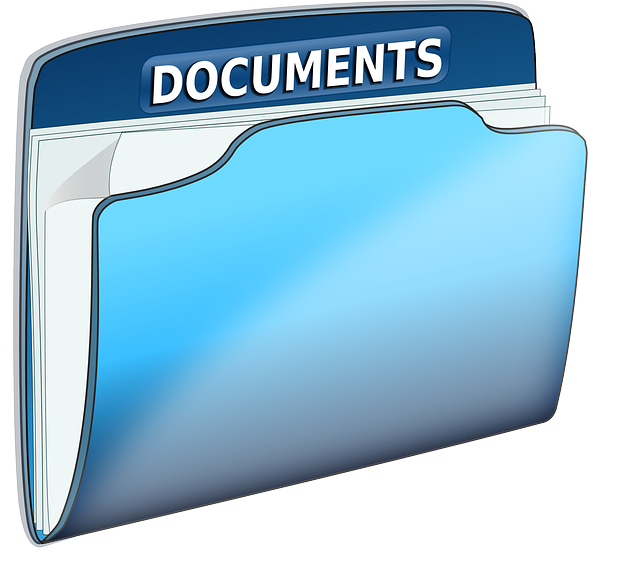
How to Upload Documents to QuickBooks From Your Smartphone
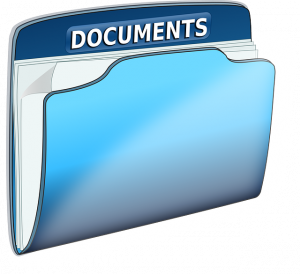 Want to upload documents to one or more transactions in QuickBooks? Assuming you use the Desktop Plus or Enterprise version of QuickBooks, you can upload documents from your smartphone.
Want to upload documents to one or more transactions in QuickBooks? Assuming you use the Desktop Plus or Enterprise version of QuickBooks, you can upload documents from your smartphone.
Intuit offers a mobile companion app for QuickBooks. You can download it for iPhones or Android handsets. Using the mobile companion app, you can upload documents to QuickBooks. There’s no faster or easier way to attach documents to transactions than by using the mobile companion app.
Check the Format
Before uploading documents to QuickBooks from your smartphone, you should check the format. You can’t upload just any type of document. Rather, you’ll have to ensure that the document’s file format is supported by QuickBooks. As long as it’s supported, you can upload the document from your smartphone. If it’s not supported, you’ll need to convert the document into a supported file format before uploading it.
Supported file formats include the following:
- PDFs
- JPEGs
- GIFs
- PNGs
- HEICs
Uploading Documents From an iPhone
To upload documents from an iPhone, launch the QuickBooks mobile app and sign in to your QuickBooks account. You should see an option to upload documents on the app’s home screen. Tapping this option will allow you to take a photo with your iPhone so that you can upload it to Quickbooks.
Alternatively, you can upload a photo that’s already saved on your iPhone. Just tap the photos icon, after which you can select the photo on your iPhone. The QuickBooks mobile app will allow you to customize the photo before uploading it. You can crop and resize it, for instance.
Uploading Documents From an Android Handset
You can upload documents from an Android handset as well. The QuickBooks mobile app is available for both iPhones and Android handsets. If you have an Android handset, you can upload documents such as photos to QuickBooks.
After launching the QuickBooks mobile app on your Android handset, tap ‘Documents” next to “Snap and Upload.” You can then tap the name of your business, followed by “Continue.” Tapping the ‘Snap Document” option will allow you to take a photo with your Android handset. If you want to upload a photo that’s already on your Android handset, tap the photos icon rather than the camera icon. When finished, tap “Use this photo.” The QuickBooks mobile app will then upload the photo to your QuickBooks account.
Did this tutorial work for you? Let us know in the comments section below!

What Is a T Account in Accounting?
 You can’t run a business without recording your debits and credits. Debits are expenses, whereas credits are revenues. While there are different ways to record expenses and credits, one of the easiest methods is to use a T account.
You can’t run a business without recording your debits and credits. Debits are expenses, whereas credits are revenues. While there are different ways to record expenses and credits, one of the easiest methods is to use a T account.
Overview of T Accounts
A T account is a simple chart consisting of two columns: a debit column and a credit column. It’s known as a “T account” because it resembles the letter. Debits are displayed on one side, and credits are displayed on the other side.
If you use the double-entry bookkeeping method, you may want to take advantage of T accounts. T accounts have become synonymous with double-entry bookkeeping. Double-entry bookkeeping, of course, states that all financial transactions affect two accounts. Each financial transaction is recorded as a debit and a credit. With the double-entry bookkeeping method, you may want to use T accounts.
Advantages of Using T Accounts
Many business owners that use the double-entry bookkeeping method also use T accounts. T accounts work well for double-entry bookkeeping because they feature columns for debits and credits. You can create T accounts manually, or you can generate them automatically with software. Regardless, T accounts feature columns for debits and credits. You can use these columns to record your business’s financial transactions.
You can use T accounts to prepare adjusting entries. Also known as adjusting journal entries, adjusting entries are data records that occur at the end of your business’s accounting period, such as the last day of a fiscal period. Adjusting entries will ensure that your business’s financial records are accurate at the end of the respective accounting period. To prepare adjusting entries, you can use T accounts.
T accounts make it easy to find and fix accounting errors. If you discover an error, you can go back and review the recorded debits and credits. In T accounts, each credit should have a corresponding debit. If there’s not a debit for a particular credit — or if it doesn’t match — you can fix it.
In Conclusion
T accounts are commonly used with the double-entry bookkeeping method. They are charts that feature a column for debits and another column for credits. The double-entry bookkeeping method requires the use of credits and debits for all financial transactions. Therefore, you can use T accounts for double-entry bookkeeping.
Have anything else that you’d like to add? Let us know in the comments section below!
